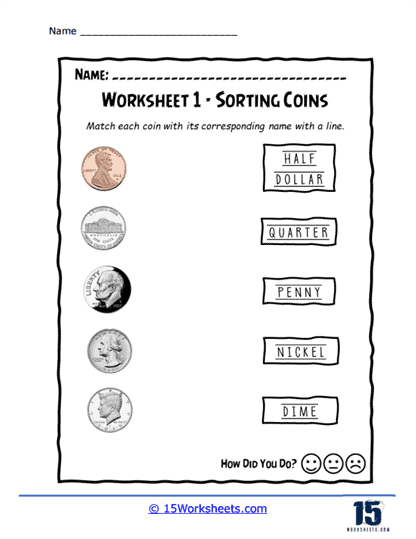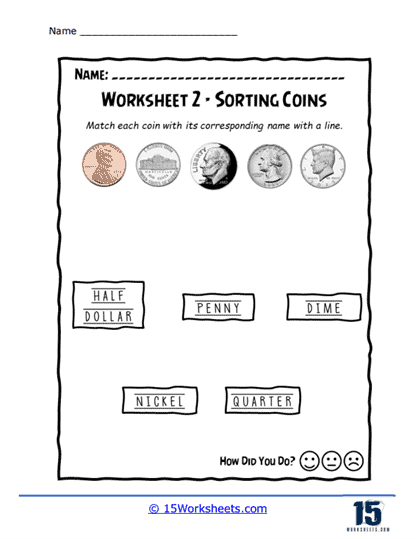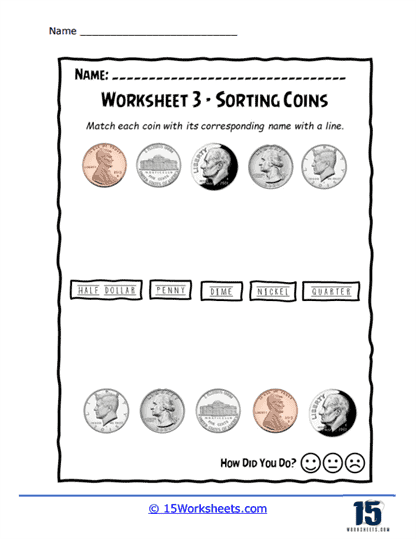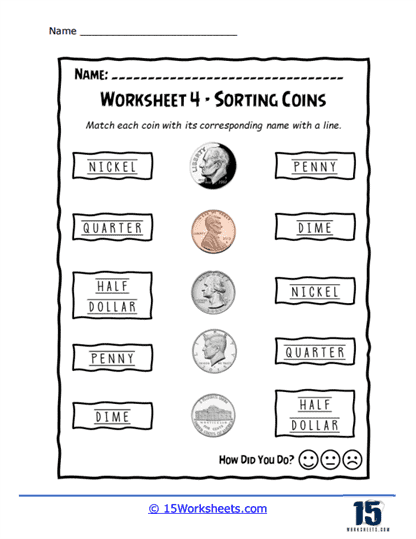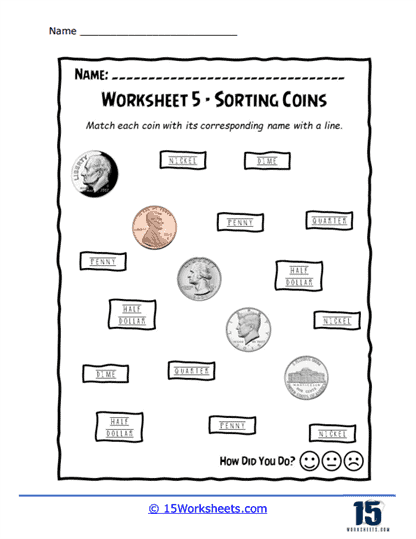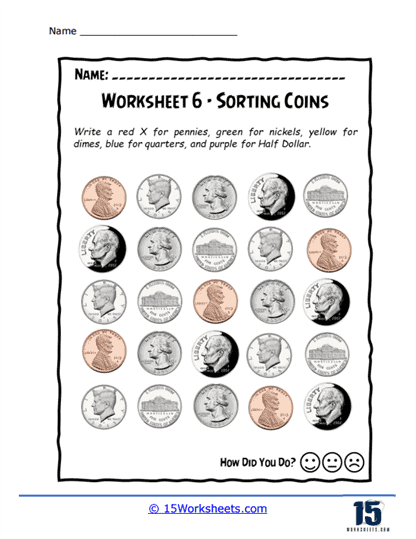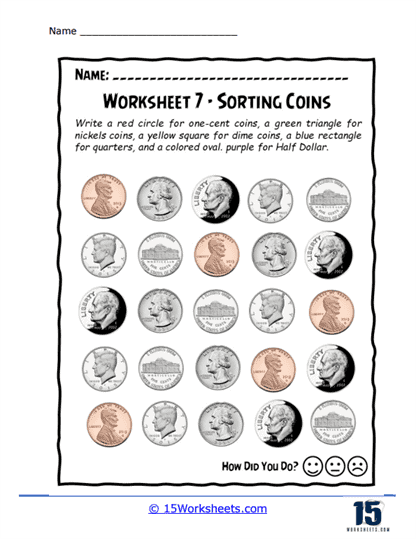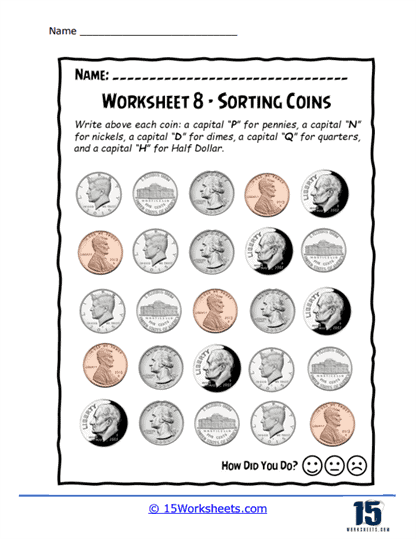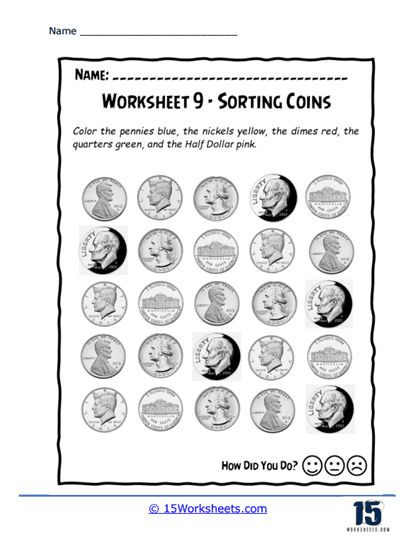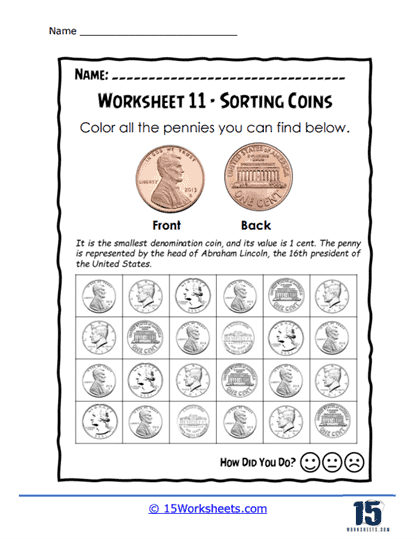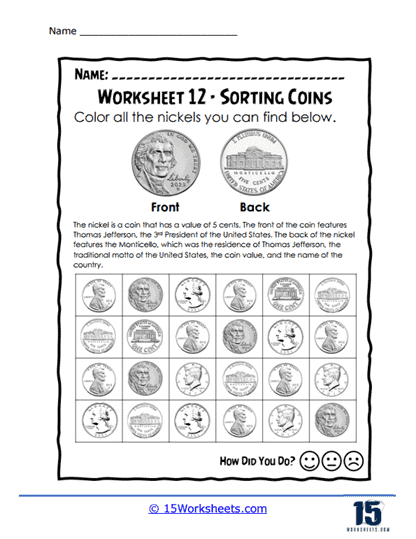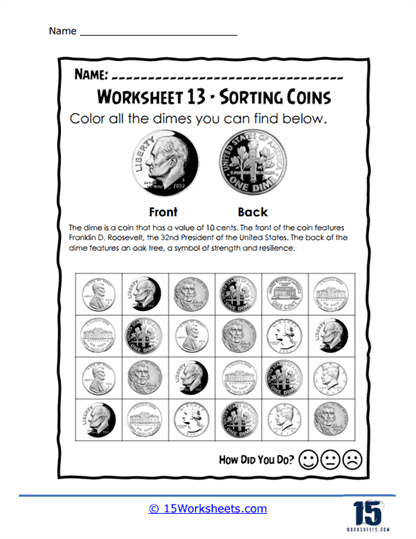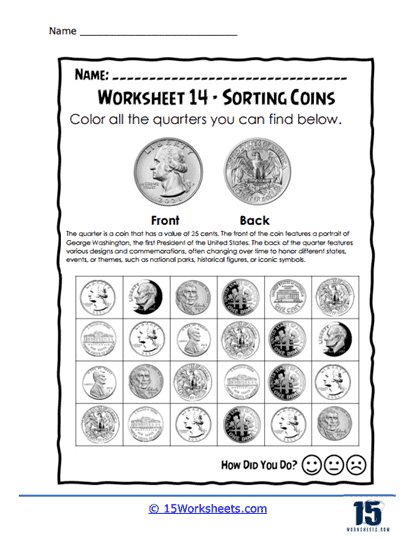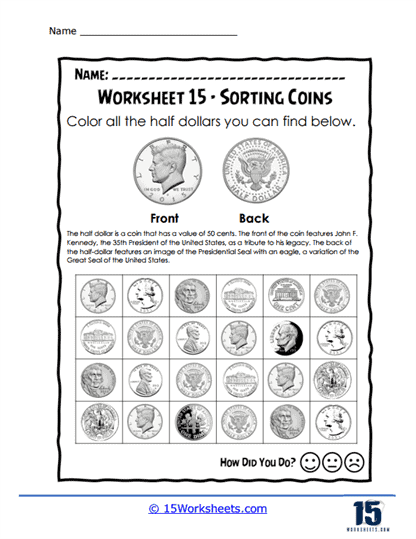Sorting Coins Worksheets
About These 15 Worksheets
These worksheets introduce and enhance students’ knowledge and skills in recognizing, sorting, and valuing different types of coins. Through a variety of exercises, these worksheets aim to familiarize students with the physical and monetary characteristics of coins, laying the groundwork for more advanced financial literacy and mathematical skills. By engaging with Sorting Coins Worksheets, students not only learn about the basics of currency but also develop critical thinking, organizational, and numerical skills essential for real-world financial transactions.
Through a variety of exercises, these worksheets not only introduce students to the physical and monetary attributes of coins but also enhance their numerical literacy, financial awareness, problem-solving abilities, critical thinking, and organizational skills. Regular practice with these worksheets prepares students for real-world financial transactions, fostering confidence in handling money and making informed financial decisions. The skills developed through Sorting Coins Worksheets are foundational for academic success and effective participation in the financial aspects of life, ensuring students are well-equipped to navigate the complexities of personal and economic financial management with confidence and competence.
Types of Exercises
Coin Identification – These exercises require students to identify different coins based on their physical attributes such as size, color, and design. Students learn to distinguish between pennies, nickels, dimes, quarters, and other coins specific to their country’s currency system.
Sorting by Value – Students are asked to sort a group of mixed coins into categories based on their value. This activity helps reinforce the concept of monetary worth and familiarizes students with the hierarchical value of coins. These exercises ask students to calculate the total value of a group of coins. It strengthens addition skills and solidifies the concept of cumulative value, preparing students for more complex financial calculations.
Comparing Coin Values – Exercises that involve comparing the values of two different groups of coins to determine which has a higher total value. This not only teaches students about the value of individual coins but also introduces basic comparison and addition skills.
Making Equivalent Amounts – Students are challenged to create different sets of coins that equal the same total amount. For example, showing how five pennies are equivalent to one nickel. This type of exercise enhances understanding of value equivalence and basic arithmetic. Students match coins to their corresponding written values (e.g., 25¢ to a quarter). This activity bridges the gap between physical currency and numerical representation, enhancing numerical literacy.
The Benefits Of These Worksheets
These worksheets brings a multitude of benefits to students, significantly impacting their numerical literacy, financial awareness, problem-solving abilities, critical thinking, and organizational skills. These worksheets, by focusing on the sorting and valuation of coins, serve as a practical tool for introducing students to the essentials of financial literacy and mathematics in an engaging and interactive manner. The varied exercises found within these worksheets are designed not only to familiarize students with different coins but also to challenge them to apply these concepts in scenarios that mimic real-life financial transactions.
One of the primary advantages of engaging with these worksheets is the enhancement of numerical literacy. Regular interaction with sorting coins exercises sharpens students’ skills in working with numbers, particularly in understanding and applying the value concept to different denominations of coins. This foundational skill is indispensable for achieving mathematical proficiency and lays the groundwork for advanced financial literacy. By mastering the ability to recognize and value coins, students develop a solid base for more complex numerical operations and financial calculations.
These exercises introduce students to the basics of currency and monetary transactions, thereby fostering an early awareness of money management. This early introduction is crucial for developing informed financial decision-making skills. As students learn to sort and value coins, they begin to understand the importance of budgeting, saving, and spending wisely. This financial awareness is a critical component of personal finance management, ensuring students are prepared for the financial decisions they will face in the future.
This type of work can also play a vital role in improving problem-solving skills. Through exercises that require calculating total values, creating equivalent amounts, or tackling word problems involving financial scenarios, students refine their ability to solve problems. These problem-solving skills are essential not just for academic success but also for navigating the complexities of everyday financial decisions, where logical and strategic thinking is often required.

